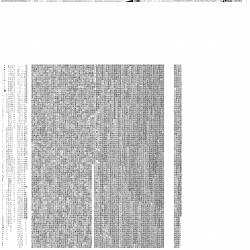[Read Desc] Bitmap Font - UnifontEX
Author:
Saturday, September 30, 2023 - 23:39
Art Type:
Tags:
License(s):
Collections:
Favorites:
1
UnifontEX is an ambitious open-source project aimed at creating a truly universal font that supports as many Unicode characters as possible. Building upon the foundation of GNU Unifont, we've expanded the character set and improved the font's compatibility to create a more comprehensive and renderer-pleasing typeface.
For more details, please see the README.md inside the archives, which actually contain every format. Also, LFF needs a lowercase filename, but to improve compression I formerly kept it consistent.
Used in the following games:
- https://play.google.com/store/apps/details?id=com.Dailyhopeless.CultureS...
- https://theyippies.itch.io/gem-frenzy
- https://store.steampowered.com/app/1393750/Oceans_Heart/
- https://github.com/TimeEntropy/TicTacToe/tree/main
- https://judypao29.itch.io/adventure-in-the-castle-zh-tw
- https://store.steampowered.com/app/2997310/Teatime_Samurai/
- https://ectalite.itch.io/moimoi
- https://thewarlock.itch.io/discovery
- https://github.com/Hexalo/marioparty_snackattack_like
- https://github.com/Prox-C/Liebestraum
- https://github.com/chrisb588/the-final-string
- https://store.steampowered.com/app/3615210/Orbs_of_Duality/
Copyright/Attribution Notice:
I am legally obligated to say that GNU Unifont is under GPL2+, and can be found at unifoundry.com, and that GNU Unifont is by Roman Czyborra and Paul Hardy, et. al.
Official permission was received.
File(s):



